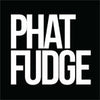5 THINGS YOU DIDN'T KNOW ABOUT TURMERIC

Turmeric, also known as the golden spice, has been a part of healing cultures around the world for centuries. Turmeric usage dates back nearly 4000 years to Indian Vedic culture, where it was used both culinarily as well as religiously. The first mention of medicinal use of turmeric is linked back to 250 BC, as an ointment targeted at relieving poisonous food effects.
With a rich history in the healing around the world, it's surprising that it has taken so long for it to become a staple in western culture. Alas, turmeric’s popularity has hit an all time high with the americanized version of golden lattes … sugar-filled and laden with processed dairy. I’m here to tell you that turmeric, when taken at proper dosages (not just sprinkled on top of a sugary, foamy milk drink) can have drastic effects on neurodegenerative diseases, and both acute and systemic inflammation. Have I tickled your anti-aging, live to be 200 years old self yet?
Turmeric falls under the category of a nutraceutical substance, meaning that it is a food based substance with health boosting, medicinal qualities. At Phat Fudge, were on team Hypocrates -- so let food be thy medicine, and turmeric the F*&^ up.
1. YOU NEED MORE TURMERIC THAN YOU THINK YOU DO
Turmeric contains bioactive compounds called curcuminoids, ironically the most studied and powerful of the curcuminoids is called, drumroll … curcumin. Curcumin is a powerful polyphenol with the power to naturally battle inflammation. With any given amount of turmeric, you are only getting about 3% of curcumin, so you’ll need to be mindful of a few strategies (outlined below) to ensure that you are getting all the benefits of turmeric supplementation.

2. TURMERIC ABSORPTION CAN BE OPTIMIZED
The turmeric by itself is very poorly absorbed by the human body, but with a little help from a substance called piperine, you can drastically increase the bioavailability of its polyphenol superstar, curcumin. Piperine is an alkaloid found in black pepper which is responsible for its pungent flavor. By adding just 20mg of piperine in conjunction with your turmeric, you can increase curcumin’s bioavailability by 2000%. (1)
While taking bioavailability into consideration, you need to be mindful of dosage to mix the proper amount of curcumin and piperine to get all the benefits. That being said, the proper dosage for daily curcuminoids is somewhere between 500-2000mg. As a rule of thumb, you’d need 2.5 teaspoons of raw turmeric powder to get 500mg of curcumin. It’s hard to pin down any exact numbers for conversion of black pepper to piperine, but by doing a bit of reverse engineering, we’ve come up with a base recommendation for daily pepper intake. Piperine makes up on average 7% of black pepper, and if we need 20mg of black pepper to enhance curcumin uptake, then we need a bout 285mg of black pepper or ⅛ teaspoon.
Also, curcumin is fat soluble, so take it with a meal … or Phat Fudge! Phat Fudge contains a smaller dosage of turmeric, but our formula utilizes synergistic flavonoids such as the quercetin found in cayenne to upregulate absorption (2). Remember, your upper limit is around 2000 mg of curcumin, so feel free to vary your sources as you begin to explore its anti-inflammatory effects.
The Magic Daily Dosage: 500mg curcumin + 20mg piperine + >5g of fat
3. TURMERIC IS AN ANTI-OXIDANT CATALYST
Turmeric’s curcuminoids enable its classification as a potent antioxidant, with benefits ranging from fighting cancer, lowering acute inflammation as well as slowing and even reversing neurodegenerative diseases (3). As if that wasn’t enough, curcumin actually boosts the activity of your OWN body's antioxidant enzymes (4).
In that way, curcumin delivers a one-two punch against free radicals. Blocking them directly, while stimulating your body's own antioxidant defense system.

4. TURMERIC IS A (LEGAL) PERFORMANCE ENHANCING SUBSTANCE
If you are someone who pushes your body to the limits via physical exercise, inflammation is at the core of whether or not you’ll be at the top of your game day in and day out. In a recent study, curcumin was shown to counteract the both oxidative stress and inflammation following muscle damaging exercise (5). So, if you want to get back on the field, road, or any other of your favorite exercise highways, supplement regularly with turmeric to reduce muscle soreness and acute muscle inflammation.
5. TURMERIC IS A POWERFUL NOOTROPIC
Curcumin is a natural nootropic that has been flying under the radar of a lot of biohackers looking to increase their mental performance. In addition to fighting off Alzheimer’s disease by breaking up neuronal blockages called amyloid plaques, curcumin can also help increase levels of brain derived neurotrophic factor (BDNF) (6). BDNF is an incredible compound, as it can reverse symptoms of depression via upregulation of serotonin and dopamine (7), while also acting as “miracle gro” for the brain, creating an environment for new brain cell creation and prevention of cognitive decline (8).
Nature has hidden some pretty incredible compounds throughout the world. Think twice about reaching for your favorite manufactured anti-inflammatory or nootropic, mother nature already has your back.

References
1 https://www.ncbi.nlm.nih.gov/pubmed/9619120
2 https://scialert.net/abstract/?doi=ijp.2012.101.107
3 https://www.ncbi.nlm.nih.gov/pubmed/17569207
4 https://www.ncbi.nlm.nih.gov/pubmed/15650394
5 https://www.fasebj.org/doi/abs/10.1096/fasebj.31.1_supplement.lb766
6 https://www.sciencedirect.com/science/article/pii/S0006899306027144
7 https://link.springer.com/article/10.1007/s00213-008-1300-y

